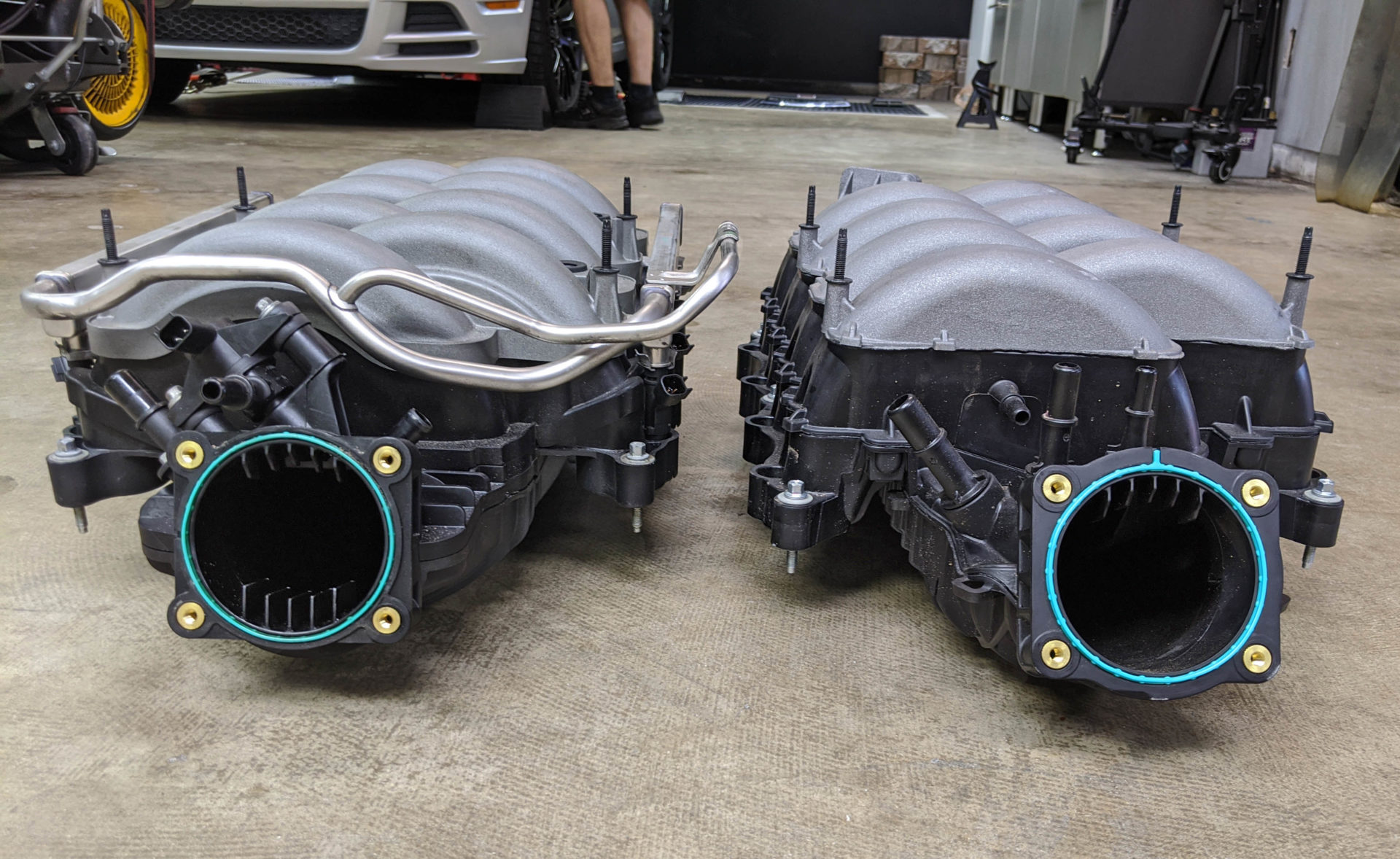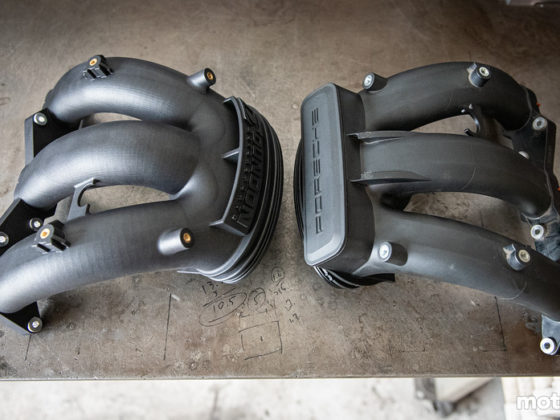We strap our first-generation 5.0L “Coyote” V8-powered S197 Mustang to the dyno and test the 2018+ “Gen-3” intake manifold, K&N air intake, and tunes by Palm Beach Dyno to find out the least expensive way to make 400 WHP on pump gas.
Four Hundred Wheel Horsepower is a lot for a track car. Especially an inexpensive one. It wasn’t that long ago when that kind of power was only found in heavily modified time attack builds or high-end production cars like our Project Viper, which put down 431 WHP stock. Heck, almost half of the MotoIQ project car builds aren’t making over 400 WHP, and the ones that do take thousands of dollars to achieve it.
Only in the last few years have relatively attainable cars made this kind of power from the factory, like the 2018+ Mustang GT and C7 Corvette. But these are hardly considered “budget track cars” when we are targeting cars 1/3 that price, around $15K.
This is the reason “Project Budget 400 WHP Track Car” exists. The 5.0L S197 Mustang might just be the least expensive way to make 400 WHP. Let’s find out what it takes:

Like many of our Mustang tests, we turn to the experts at Palm Beach Dyno in Boynton Beach, Florida for their tuning expertise and proper back-to-back test methods. PBD has done the dyno work when we tested Ford’s Power Pack 1-3 on a (Gen 2) 2016 Mustang GT, as well as the impressive gains from the Borla Type S exhaust on a (Gen 3) 2018 Mustang GT. We were eager to see what this Gen 1 S197 would do.

Strapped to the rollers, we were ready for the baseline pull.
Stock 2014 Mustang GT – Baseline

Our bone stock 2014 Mustang GT put down a very typical 375.93 WHP and 369.95 LB-FT of torque. Peak torque came in at 4,300 RPM and peak power at 6,600rpm. This puts us right at a 10.5% drivetrain loss to the factory rated 420 crank horsepower.
2014 Mustang GT (Gen-1) VS 2015 Mustang GT (Gen-2) VS 2018 Mustang GT (Gen-3)
Here we have all three generations of Coyote. Our 2014 (Gen-1) in RED, a 2015 (Gen-2) in BLUE, and our 2018 (Gen-3) in GREEN. These cars put down 376, 389, 417 WHP respectively. That’s nearly matches the factory rated crank horsepower figures of 412(420), 435, 460 HP respectively.
Compared to our Gen-1, the Gen-2 trades a little bit of mid-range power from 4,000-5,500 RPM to eek out more power at the top of the revs. Meanwhile, the Gen-3’s directed injection, higher compression ratio, better flowing heads and manifold raises the torque curve across the bar, making noticeably more power than the previous two generations.
2014 Mustang GT VS Stock 2010 E90 M3 VS E90 M3 with Test pipes and Tune

Our stock Gen-1 Coyote (2011-2014) in RED made significantly more power than our Project E90 M3 did stock (GREEN). The 2008-2013 E9X M3’s 414 BHP 4.0L V8 was the Mustang’s direct competitor in its day and put down 334 WHP and a rather weak 241 LB-FT of torque stock. With a cat-delete and tune (BLUE) the M3 just barely made a couple more horses than the stock Gen-1 Coyote. The premise is true that it’s not that easy or inexpensive to make 400 WHP.
Quick Reference:
Page 1 – Baseline Dyno
Page 2 – K&N Performance Air Intake System
Page 3 – K&N Intake Install
Page 4 – K&N Intake Dyno & 2018+ Intake Manifold
Page 5 – 2018+ Intake Manifold CMCV Delete and Stock Manifold Removal
Page 6 – Stock Gen 1 vs Gen 3 (2018+) Manifold Comparison
Page 7 – 2018+ Manifold Install
Page 8 – 2018+ Manifold Dyno & Tune




10 comments
Would it make sense to attempt a bit of port matching to accommodate for the larger ports on the manifold. It doesn’t appear to be a huge difference, but hitting that hard edge on the heads is definitely disturbing air flow.
I guess the big unanswered question is would the same tune time get you 400hp with the old manifold minus the torque loss. Doubt you would get a peak that matches, but the area under the curve might be more useful on a track car.
Stay tuned for Part 3 where we answer that question.
and here I was all excited to read about panhard bar benefits over watts link…
Stay tuned for the article that tackles the suspension.
Love it.
Awesome testing! Based on what I saw on Project S2000 with testing of the airbox lid on vs off, I mean, you and I know you’ll see similar on the Mustang. But it’s always great to see the real data, so I’m excited to see it! I always love seeing the data you present.
As much of a Mustang fan as I am, certainly a 4th gen F-body with a cam and exhaust is a cheaper ticket to 400whp.
I just looked into it and it doesn’t seem like a cam and exhaust can make 400whp on an F-body. Even if it does, this is “Budget 400whp TRACK CAR” and it would cost far more to make an F-body competent on road courses 😉
Great information,I can’t wait to see the third article.